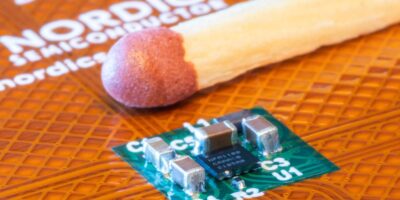Multiple SoC tape-outs at early adopters of the Arm Cortex-X2, Cortex-A710, and Cortex-A510 CPUs based on Arm’s Armv9 architecture, Arm Mali-G710 GPUs and Arm DynamIQ Shared Unit-110, have been announced. They were achieved using Synopsys’ EDA and IP, including Fusion Design Verification Continuum and DesignWare Interface IP.
The latest SoCs, developed for high end consumer devices, use Armv9’s performance and power efficiency enhancements and jointly developed flows and methodologies targeting the latest 5nm, 4nm and 3nm process technologies.
The EDA tools and IP provide designers with the leading, SoC-centric, and power-first software-to-silicon solution, says Synopsys, to hasten the achievement of the maximum performance per Watt across various use cases, including specialised artificial intelligence (AI), digital signal processing (DSP) and virtual and augmented reality (XR) workloads which are expected to be broadly deployed in next generation consumer devices.
“Based on the Armv9 architecture, the Arm Total Compute solution is designed to deliver a step-change in compute performance and efficiency while providing the levels of native security and trust needed in an increasingly data-centric and connected world,” said Paul Williamson, senior vice president and general manager, Client Line of Business, Arm.
Designers creating Armv9-based SoCs for a range of markets, including smartphones, laptops, PCs, digital TVs, wearables, and augmented- and virtual-reality applications, select Synopsys’ portfolio of integrated digital, verification and interface IP solutions to achieve optimum differentiation and the fastest time-to-market, says the company.
“Data is becoming an ever-increasing and important currency in this knowledge-driven world, and its timely, efficient and secure processing is paramount in shaping a safe, information-leveraged future,” said Shankar Krishnamoorthy, general manager of the Digital Design Group at Synopsys. “Our broad portfolio of optimised design, verification, IP, software security and software quality solutions have been aggressively co-optimised with Arm to enable a new wave of high-value applications based on the Armv9 architecture, establishing the new benchmark for trustworthy, power-centric performance.”
According to Synopsys, the Fusion Design Platform delivers unprecedented full-flow quality-of-results and time-to-results. Fusion Technology redefines conventional EDA tool boundaries – test, synthesis, place-and-route, and signoff – by sharing common, best-in-class engines, enabling broad-flow optimisations and wide-ranging margin reduction for performance per Watt and time to results.
Early adopters of Arm’s Armv9 mobile solution are using Synopsys’ Verification Continuum Platform solutions optimised for Arm, including Virtualizer Development Kit (VDK) with Arm Fast Models for Cortex-X2, Cortex-A710, Cortex-A510 CPUs and Mali-G710 GPUs, VCS simulation, Verdi for hardware and software debug, Verification IP for the latest Arm AMBA interconnect, ZeBu Server and HAPS hardware to accelerate hardware-software development and power and performance validation to reduce time-to-market.
The DesignWare Interface IP portfolio provides the performance, power efficiency, security and real-time connectivity for Arm-based systems implementing the latest Cortex CPUs and Mali GPUs. Synopsys’ IP portfolio of controllers and PHYs supporting the latest protocols such as PCI Express, DDR, MIPI and USB, is optimised for the rapid development of Arm-based SoCs.
Synopsys QuickStart Implementation Kits (QiKs) include implementation scripts and reference guides and enable early adopters to accelerate time-to-market and achieve their demanding performance per Watt targets.







